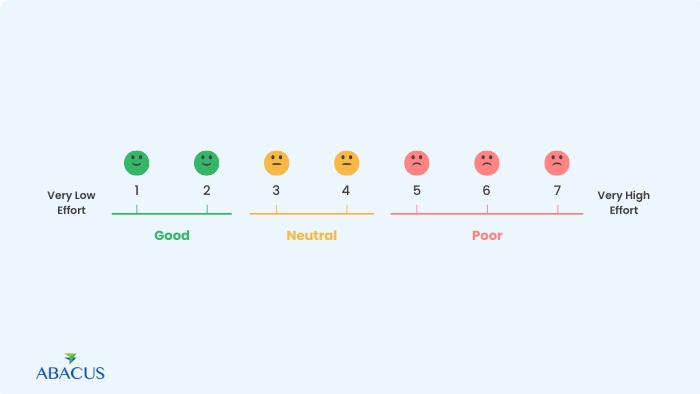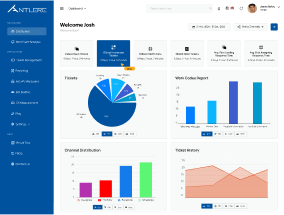Sentiment Analysis: What It Is, Why It Matters, and How It Works
What is Sentiment Analysis?
Sentiment analysis is a technique through which one analyses text and finds out whether the sentiment is positive, negative or neutral. In layman terms it is the transfer of human feelings into quantifiable information.
To learn the perception customer’s hold of their brand, services, or products, businesses use it on reviews, surveys, support tickets and online conversations.
Sentiment analysis applies to large amounts of text and is used to interpret it, compared to the basic definition of sentiment which explains the emotions in a theoretical manner. Using NLP to perform sentiment analysis allows organizations to scan thousands of transactions in seconds, and it is not only what customers say but rather how they feel.
Why is sentiment analysis important for businesses?
In the digital economy, there are more customer voices than ever. The perception of people may be formed by one social media post or review. This is why sentiment analysis is essential.
It assists businesses to objectively, without human influence, reveal customer sentiment, as well as real time sentiment changes, which indicate opportunities or crises.
Its greatest asset is that it can be used to drive customer centric decisions. Companies that are guided by the insights provided by sentiment analysis can make products better, enhance service, and build loyalty. Concisely, it transforms subjective feedback to systemized information that drives progress.

What are the benefits of conducting sentiment analysis?
The advantages of sentiment analysis go much further than the reputation tracking. It allows the support teams to focus on the frustrated customers and offer them quicker solutions.
Marketers are able to optimize campaigns by monitoring the responses of the audience, the product teams understand what customers love and what requires optimization.
It also assists businesses to position themselves better in competitive markets. When powered by the correct sentiment analysis tools, the benefits increase manifold, as businesses can now scale the insights into actionable power.
What are the four main steps of sentiment analysis?
Sentiment analysis typically includes four major steps. The processing of the text includes preprocessing like cleaning and eliminating irrelevant words. It is then subdivided into smaller tokens and categorized to be analyzed. Then, the rule-based or machine learning models, known as algorithms, identify the emotional polarity of the text.
Finally, the results are explained and delivered in dashboards or reports to allow groups to take constructive action.
It is one way of uniformity, precision and conciseness through massive data sets, even though it analyzes millions of interactions at the same time.
What are the different sentiment analysis methods?
Sentiment analysis has three major approaches. A rule approach relies on a predetermined set of words, or lexicon, to give polarity. An example is that happy may be positive and angry may be negative.
It is simple, but tends to lack subtlety. Instead, machine learning methods train models on massive data sets to be able to identify intricate patterns, sarcasm, and setting.
Lastly, in hybrid systems, the two are unified, providing the accuracy of the rules with the flexibility of machine learning. The selection of the appropriate method is based on the objective of the goal being customer sentiment analysis by service teams or real time sentiment tracking by brand monitoring.
How does sentiment analysis work in practice?
Sentiment analysis is based on natural language processing (NLP), artificial intelligence at its core. The text is subdivided, scored and labeled to represent emotions. As an illustration, a sentence could be rated as positive, +1, or a neutral, 0, or a negative, -1.
When used on a scale of thousands of reviews or social media posts, these scores can show definite trends in customer perception. Marketing teams are able to gauge campaign effectiveness and customer service departments are able to determine which issues keep causing frustration. Using a sentiment analysis software, companies can see how customers feel nearly in real-time.
What does customer sentiment analysis reveal?
Customer sentiment analysis is more than a standard survey. It does not just show the customers what they feel but how they think.
This difference is important since emotions tend to be superior to logic when forecasting behavior. The existence of a positive tone at all times means that there is loyalty and frustration is a sign of a churn risk.
These insights help the companies to recognize product problems, loyalty drivers and even forecast future actions. Listening to their emotions, organizations establish strong and enduring relationships with its audience.

What are the main use cases of sentiment analysis?
The sentiment analysis is broad and flexible. In the customer service, it assists the agents to identify frustration in the ticket and prioritize responses. It uses sentiment analysis in social media in marketing to help marketing teams monitor brand mentions and modify campaigns.
It is used by market researchers to discover customer views of the competitors and industry trends and by product teams to refine the features according to the emotional response.
Even internally, sentiment analysis can analyze employee surveys to monitor morale and engagement. Across each use case, the common thread is the ability to transform raw text into actionable intelligence.
What challenges does sentiment analysis face?
Sentiment analysis has its challenges even though it is useful. Simple keyword based-systems can be fooled by sarcasm and irony, whereas negation phrases such as not bad might also work the other way around and deceive the algorithms.
The cultural differences also contribute to the interpretation of words and ambivalent emotions in the same sentence need the sophisticated, aspect-based techniques.
These difficulties are driving constant innovation. Modern sentiment analysis methods blend rule-based logic with AI and deep learning to reduce errors and better capture the nuances of human language.
How does sentiment analysis differ from semantic analysis?
While sentiment analysis is used to determine the tone of emotion, semantic analysis is centred on meaning and relationships among words. Sentiment and semantic analysis when put together will give business a full picture of the communication with the customers.
Sentiment shows the mood, where semantic analysis elucidates intent. Collectively they assist the firms to know what people say, as well as what they do.
Final thoughts
In today’s digital age sentiment analysis is no longer an option it is a must in a customer-based world. Through feedback analysis, campaign tracking, and real time sentiment tracking, businesses can learn their audiences more than ever before.
Organizations can achieve a competitive edge by paying close attention to what people feel whether it is in customer sentiment analysis or social media sentiment analysis.
At Abacus BPO, we help businesses harness the power of sentiment analysis and other advanced research methods to drive smarter decisions, improve customer experience, and strengthen brand loyalty. If you’re ready to turn customer feedback into a competitive edge, our team can provide the expertise and tools you need to make it happen.









